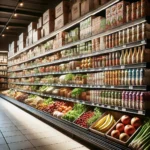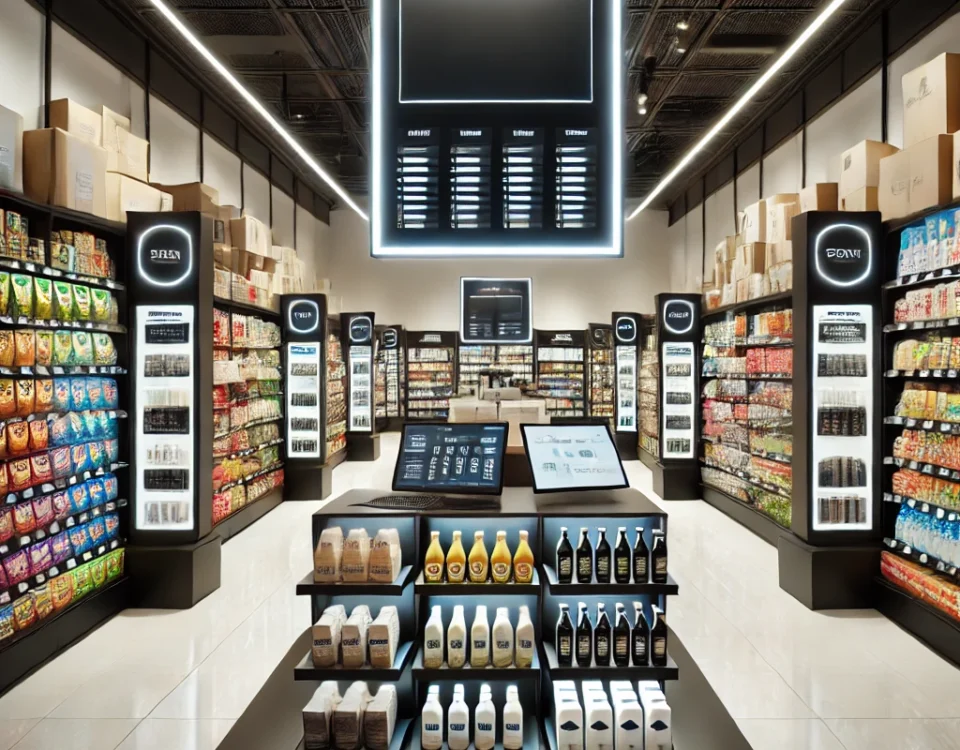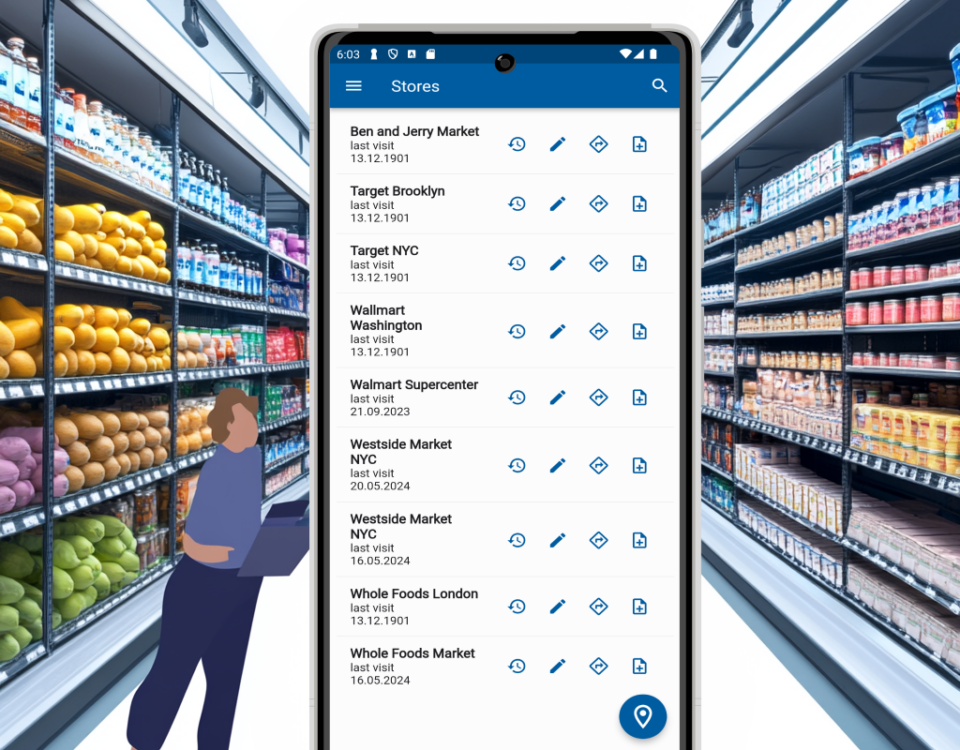
What is the role of the merchandiser and why is it key to successful sales?

Managing a Field Team: 7 Strategies for FMCG Success
Planograms and their role in merchandising
Definition and purpose
Planograms are strategic tools in merchandising that go beyond simple visual planning. They are detailed graphical representations that show the exact placement of products in stores. The main purpose of planograms is to create visual consistency and harmony in retail outlets, which is essential for guiding consumer flow and driving sales. By optimizing the retail space, planograms help merchandisers ensure that each product is placed in the most appropriate location, increasing its visibility and sales.
In addition to organizing product positioning, planograms also play a critical role in inventory and space management. They allow merchandisers and retailers to anticipate product movement, thereby minimizing the risk of empty shelves or overcrowding. Planograms create standardized procedures that facilitate consistency across all store locations, ensuring that customers will encounter the same high standard of visual presentation regardless of where they shop.
Function in merchandising
Planograms are essential for merchandisers who are responsible for presenting products in the most attractive way. By properly arranging products, merchandisers can ensure that products that are strategically important to the retailer occupy the best positions in the store. For example, high-margin products can be positioned at eye level, greatly increasing the chance that they will be noticed and purchased. Additionally, planograms help merchandisers distribute products in a way that directs customers to key merchandise and promotions, while creating convenience and facilitating the shopping experience. This optimization of retail space not only increases sales but also improves the overall customer experience in-store.
In practice, planograms are applicable to small boutiques as well as large supermarkets. In smaller stores, they help maximise limited retail space by ensuring that every product is in its place and contributes to the overall look of the store. In large retail chains such as Billa and Lidl, planograms create consistency between different store locations, leading to better inventory management and a better customer experience.
The successful implementation of planograms not only improves the visual appeal of the store, but also plays an important role in increasing sales. Through careful planning and strategic placement of products, retailers can direct customer attention to specific products, resulting in increased sales and optimized profits. Merchandisers who understand and properly implement planograms are essential to the successful operation of any retail outlet.
The impact of planograms on sales
Efficient use of space: proper application of planograms allows merchandisers to maximize retail space by providing visibility and easy access to all products. This not only increases the likelihood of sales but also improves the overall efficiency of the store. Optimized space utilization leads to better inventory management and greater convenience for customers, which in turn enhances customer satisfaction.
Increase sales: strategic placement of products on shelves is essential to stimulate impulse purchases and increase overall sales. When merchandisers strictly follow planograms, they ensure that the most important and profitable products take center stage, such as those at customer eye level. This appealing presentation of the merchandise directs the attention of consumers and drives them to purchase, which directly leads to increased store revenue.
Improving visual appeal: planograms also help to create a harmonious and attractive appearance of the retail outlet. Products arranged in an aesthetic and logical manner create a sense of order and professionalism, making the store more attractive to customers. This not only improves the visual perception of the outlet, but also builds consumer confidence that the products are of high quality and have been carefully selected, increasing the likelihood of purchase.
The importance of packaging in the context of planograms
Packaging as a positioning factor
Packaging is not just a means of storing the product, it is a key factor in its successful positioning on the shelf. The design, colour, size and even shape of the packaging can significantly influence the visibility and attractiveness of the product. Merchandisers should evaluate these characteristics when applying planograms, taking into account how different packages interact with other products on the same shelf. Products with larger, bright or unique packaging may attract more attention, but if not positioned properly, may overshadow other important merchandise or create a feeling of clutter.
Well-designed packaging can facilitate sales by catching the consumer’s eye and encouraging impulse purchases. For example, products with innovative or environmentally sustainable packaging are often perceived as higher quality or ethical, making them more appealing to the modern consumer. Merchandisers should use these packaging features to build attractive and effective product displays.
Role of merchandisers
Merchandisers have the responsibility to ensure that packaging conforms to the requirements of the planograms. This includes not only arranging the products correctly on the shelves, but also ensuring that the packaging is positioned to attract maximum attention and stimulate purchases. They need to ensure that products are positioned in line with planned marketing strategies and that packaging is presented in a way that highlights their strengths.
Merchandisers also need to be aware of the possible challenges associated with different packaging, such as packages with non-standard sizes or those that require special storage conditions. They need to adapt planograms to ensure these products are presented effectively without compromising the visual appeal of the shelf. The ultimate goal is to strike a balance between aesthetics and functionality, resulting in a better customer experience and increased sales.
The difficulties in keeping track of planograms
Monitoring and implementing planograms in retail outlets is a labor-intensive task that requires precision and attention to detail. Merchandisers are often faced with challenges such as inventory changes, the need to update planograms in real time and providing evidence of correct product stacking. These tasks can be difficult and time-consuming, especially in the absence of automated management systems.
How Movemar makes it easy to keep track of planograms
Movemar greatly alleviates these challenges by automating the process of tracking planograms. The platform gives merchandisers access to up-to-date planograms in real-time, directly on their mobile devices. This allows for quick and easy completion of assigned tasks without the risk of errors associated with using outdated information.
After arranging the products according to the planogram, merchandisers can take a picture of the shelf and upload it to the system as proof of fulfillment. This feature not only ensures the accuracy of the arrangement, but also provides transparency and accountability in the process. Thanks to Movemar, task turnaround time is significantly reduced and efficiency and accuracy are increased, leading to better results and increased sales.
Conclusion
Planograms are an integral part of successful merchandising, playing a key role in optimizing retail spaces and driving sales. Proper implementation ensures efficient use of space, increases product visibility and enhances the customer experience. Movemar facilitates this process by providing merchandisers with real automation tools that not only increase accuracy and efficiency, but also ensure accountability by easily tracking and proving planogram execution. This leads to better results and higher sales.




